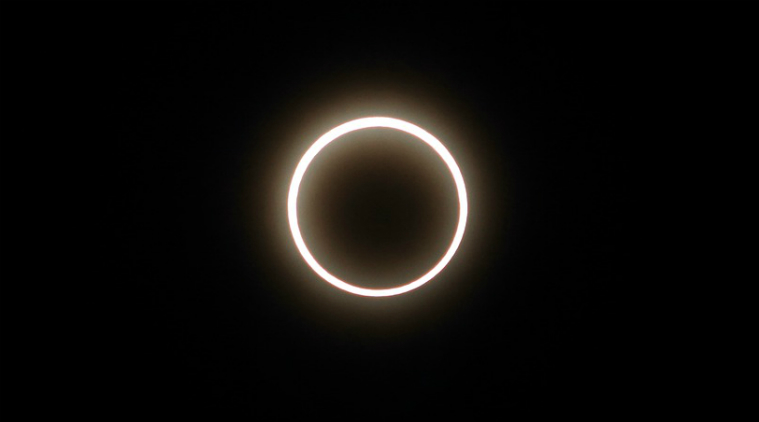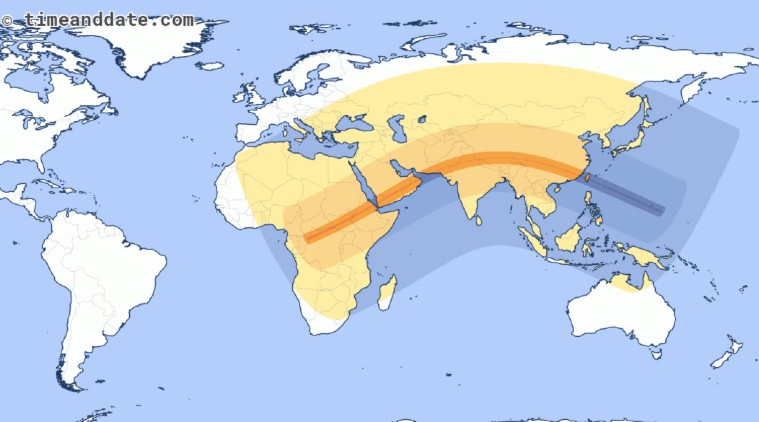 Solar Eclipse 2020 Date: The June 21 solar eclipse will start at 9:15 AM IST and will go on until 3:04 PM IST. (Image: Pixabay/bairi)
Solar Eclipse 2020 Date: The June 21 solar eclipse will start at 9:15 AM IST and will go on until 3:04 PM IST. (Image: Pixabay/bairi)
Solar Eclipse 2020 Date and Time in India: The first solar eclipse of 2020 will take place on June 21. This will be an annular solar eclipse, during which the Moon will cover the Sun from the centre leaving a ring of light visible in the sky. This will happen as the Moon will be far away from Earth, which will make its relative size not big enough to cover the Sun completely.
When will the first solar eclipse of 2020 take place? Where will it be visible?
The June 21 solar eclipse will start at 9:15 AM IST and will go on until 3:04 PM IST. The maximum eclipse will take place at 12:10 IST. According to timeanddate.com, the eclipse will be visible from much of Asia, Africa, the Pacific, the Indian Ocean, parts of Europe and Australia.
 The eclipse will be visible from much of Asia, Africa, the Pacific, the Indian Ocean, parts of Europe and Australia. (Image: TimeandDate.com)
The eclipse will be visible from much of Asia, Africa, the Pacific, the Indian Ocean, parts of Europe and Australia. (Image: TimeandDate.com)
What is a solar eclipse?
During a Solar eclipse the Sun, Moon and Earth are in a straight line and the Moon comes between the Sun and Earth, due to which the rays of the sun are blocked from reaching the Earth. This darkens the sky as if it is night time.
There are three kinds of solar eclipses: Total, Partial and Annular. During a total solar eclipse, the Moon fully blocks the Sun, with the people on Earth unable to see it and there being complete darkness. During a partial solar eclipse, the Moon covers a part of the Sun making a recent shape sun visible to the people. Lastly, during an annular solar eclipse, the Moon covers the Sun fully, but due to its relatively small size the out ring of the Sun is completely visible to the people.
Interesting fact: A solar eclipse usually occurs around two weeks prior or after a lunar eclipse. Usually, there are two eclipses in a row. However, there have been times that we have seen three eclipses one after the other.
When is the next solar eclipse?
There will only be two solar eclipses this year. The first one will take place on June 21, whereas, the next one will take place on December 14. The next solar eclipse will be a total solar eclipse, during which the Moon will completely block off the Sun’s rays and cast a shadow over the Earth. According to timeanddate.com, the next solar eclipse will be visible from South America, Pacific, Atlantic, and parts of the Indian Ocean, Antarctica, and Africa.